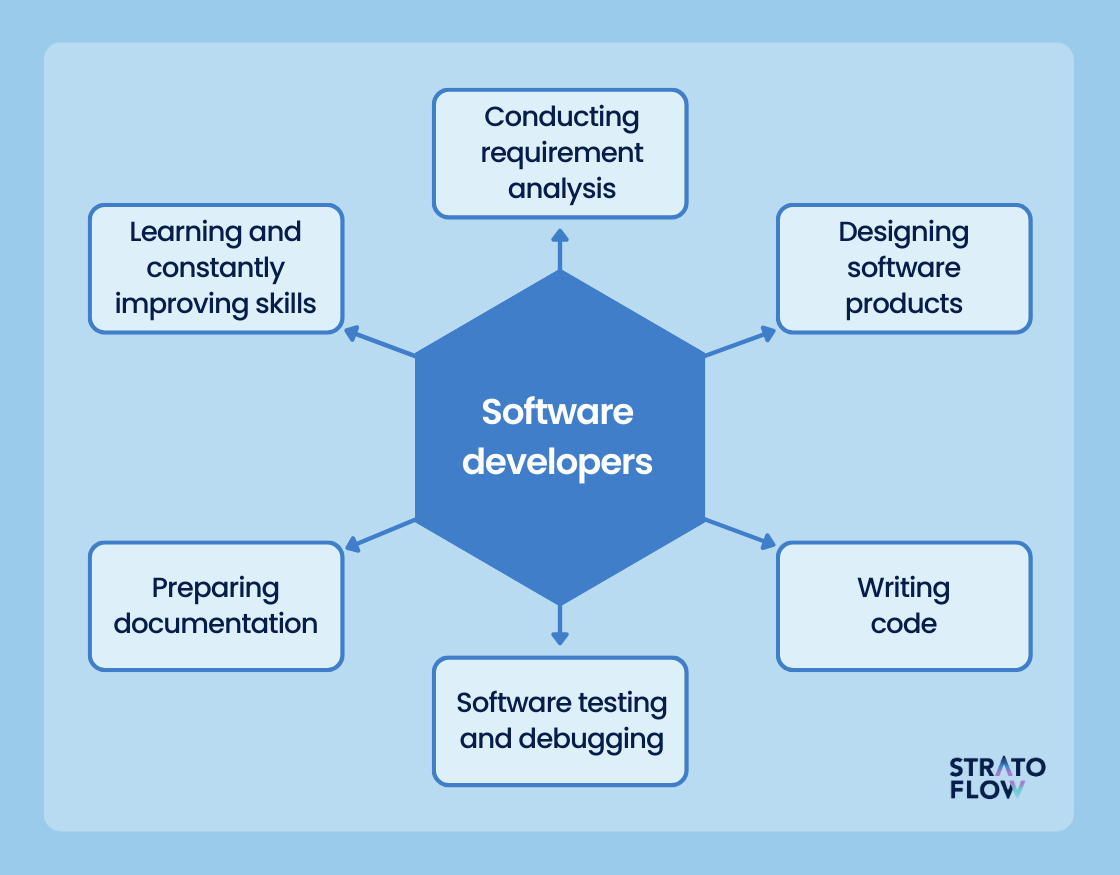Simplify Your Projects with Reliable Software Development Staff Augmentation
Wiki Article
Dedicated Developers vs. In-House Teams: Which Is Right for You?
The decision between making use of committed designers and preserving an internal group is a considerable one that can impact the trajectory of your jobs and total organization method. On the other hand, internal groups contribute to a cohesive company culture and a nuanced understanding of long-term objectives.Understanding Committed Developers
The growing need for specialized skills in the technology industry has actually led to the development of devoted designers as a sensible option for numerous organizations. These experts are generally acquired on a project basis, allowing firms to take advantage of certain competence without the long-lasting commitment connected with full-time hires. Committed designers are commonly embedded within a client's team, offering adaptability and scalability to satisfy job demands.This version enables companies to access an international ability pool, which is specifically advantageous in a quickly evolving technical landscape. Committed programmers can be sourced from various geographical areas, guaranteeing that business can locate the right capability at competitive prices. They frequently bring a wealth of experience and understanding, having serviced varied tasks across various markets.
Moreover, specialized developers can concentrate solely on the jobs handy, boosting performance and efficiency. They are furnished to integrate effortlessly into existing workflows, collaborating very closely with in-house teams to achieve project objectives. This strategy not only minimizes the concern of recruitment and training but also enables companies to continue to be nimble, adjusting quickly to changing market demands and technical innovations.
Benefits of In-House Teams

Furthermore, internal groups tend to have a much deeper understanding of the company's mission, values, and goals. This positioning can improve staff member involvement and inspiration, as group participants really feel a lot more attached to their job and the company's success. In addition, having a dedicated in-house team allows for far better alignment of techniques and goals, as these members are constantly concentrated on the business's top priorities.
Internal teams likewise assist in quicker decision-making processes, as they can respond more rapidly to changes and challenges. The well established connections and familiarity with firm procedures enable streamlined process and minimized miscommunication. Eventually, the combination of a natural society, positioning with organizational objectives, and efficient communication makes internal teams a useful property for many companies, specifically those aiming to grow long-term development and development.
Cost Factors To Consider
When assessing price factors to consider, both internal groups and dedicated programmers present distinctive financial implications for companies. Engaging specialized programmers typically includes a pay-per-project or per hour price design, which can be cost-efficient for companies with rising and fall task needs. This method enables for adaptability in scaling resources up or down, making sure that companies only pay for the solutions they need.In comparison, internal teams require repaired costs, including salaries, advantages, and overhead costs such as office and tools. While this model uses greater control and prompt availability of resources, it may bring about higher long-lasting costs, especially if the work does not warrant a full-time team.
In addition, firms should think about the surprise prices connected with employment and training of internal workers, which can further strain budget plans. In some cases, the time and sources invested on handling an in-house team can interfere with the organization's core business goals.

Job Management and Adaptability
Task monitoring and flexibility are important variables that affect the choice between specialized programmers and internal groups. Dedicated teams frequently have developed processes for handling jobs successfully, leveraging details techniques like Agile or Scrum, which promote iterative progression and flexibility.
Ultimately, the selection in between specialized developers and internal teams hinges on the wanted level of adaptability and the particular job monitoring demands. Companies have to examine their operational characteristics, project complexity, and source availability to determine which choice aligns finest with their tactical goals.
Making the Right Selection
Selecting the ideal development method-- committed programmers or in-house groups-- needs a mindful analysis of numerous aspects that align with a company's calculated objectives. software development partner. First, think about the nature of the job. Devoted programmers might be extra ideal if it requires specialized abilities or a fast scale-up. Alternatively, internal groups can offer better connection and assimilation with existing employees.Following, examine your budget. Committed designers commonly offer affordable web design a cost-efficient option for short-term jobs, while in-house groups might incur greater long-lasting expenditures because of salaries, benefits, and expenses costs. Analyze the level of control and cooperation wanted; in-house groups generally foster stronger interaction and alignment with business culture.
If immediate results are needed, dedicated designers can be onboarded quickly, whereas developing an internal team takes time for recruitment and training. If continuous advancement is crucial, investing in an in-house group might generate much better returns over time.
Final Thought
To conclude, the decision between dedicated programmers and in-house groups depends upon job requirements and organizational objectives. Devoted developers supply adaptability and specific know-how, making them appropriate for temporary campaigns. Alternatively, in-house groups grow a cohesive society and deeper alignment with lasting goals. Careful analysis of budget plan constraints, task timelines, and preferred control levels is crucial for figuring out the most appropriate technique, ensuring alignment with strategic concerns and operational effectiveness.The choice between making use of dedicated designers and maintaining an internal team is a substantial one that can affect the trajectory of your projects and overall business technique.Job monitoring and versatility are essential elements that influence the option in between in-house groups and dedicated designers. software engineering staffing.In comparison, internal groups might succeed in keeping a regular go to my site project management framework due to their familiarity with the organization's society and lasting objectives. Devoted programmers frequently provide a cost-efficient remedy for short-term jobs, while in-house groups might incur greater long-lasting expenditures due to incomes, advantages, and expenses expenses.In conclusion, the decision between specialized designers and in-house teams pivots on task needs and business goals
Report this wiki page